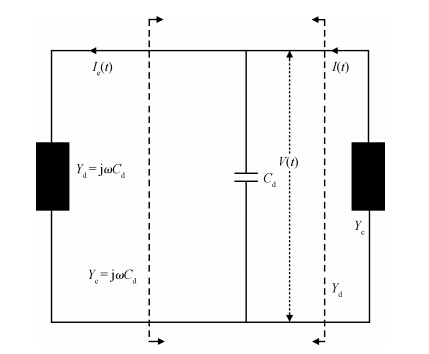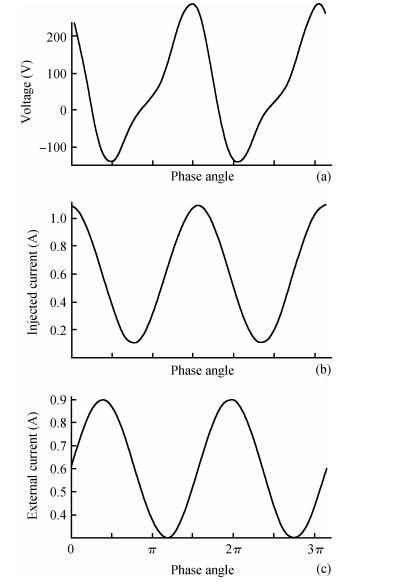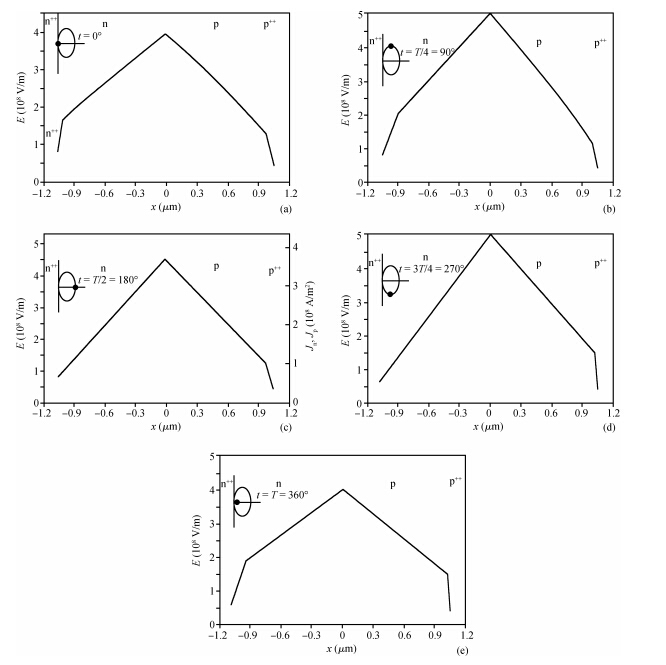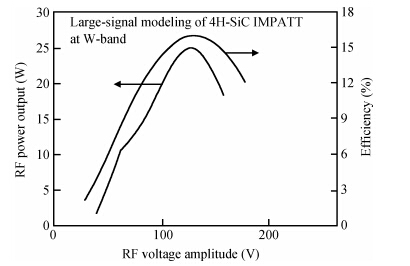| Citation: |
Moumita Mukherjee, P. R. Tripathy, S. P. Pati. Si/SiC-based DD hetero-structure IMPATTs as MM-wave power-source: a generalized large-signal analysis[J]. Journal of Semiconductors, 2015, 36(6): 064005. doi: 10.1088/1674-4926/36/6/064005
****
M Mukherjee, P. R. Tripathy, S. P. Pati. Si/SiC-based DD hetero-structure IMPATTs as MM-wave power-source: a generalized large-signal analysis[J]. J. Semicond., 2015, 36(6): 064005. doi: 10.1088/1674-4926/36/6/064005.
|
Si/SiC-based DD hetero-structure IMPATTs as MM-wave power-source: a generalized large-signal analysis
DOI: 10.1088/1674-4926/36/6/064005
More Information
-
Abstract
A full-scale, self-consistent, non-linear, large-signal model of double-drift hetero-structure IMPATT diode with general doping profile is derived. This newly developed model, for the first time, has been used to analyze the large-signal characteristics of hexagonal SiC-based double-drift IMPATT diode. Considering the fabrication feasibility, the authors have studied the large-signal characteristics of Si/SiC-based hetero-structure devices. Under small-voltage modulation (~ 2%, i.e. small-signal conditions) results are in good agreement with calculations done using a linearised small-signal model. The large-signal values of the diode's negative conductance (5 × 106S/m2), susceptance (10.4 × 107 S/m2}), average breakdown voltage (207.6 V), and power generating efficiency (15%, RF power: 25.0 W at 94 GHz) are obtained as a function of oscillation amplitude (50% of DC breakdown voltage) for a fixed average current density. The large-signal calculations exhibit power and efficiency saturation for large-signal (> 50%) voltage modulation and thereafter decrease gradually with further increasing voltage-modulation. This generalized large-signal formulation is applicable for all types of IMPATT structures with distributed and narrow avalanche zones. The simulator is made more realistic by incorporating the space-charge effects, realistic field and temperature dependent material parameters in Si and SiC. The electric field snap-shots and the large-signal impedance and admittance of the diode with current excitation are expressed in closed loop form. This study will act as a guide for researchers to fabricate a high-power Si/SiC-based IMPATT for possible application in high-power MM-wave communication systems. -
References
[1] [2] [3] [4] [5] [6] [7] [8] [9] [10] [11] [12] [13] [14] [15] -
Proportional views





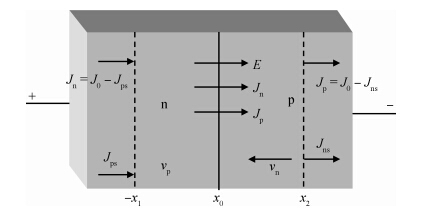
 DownLoad:
DownLoad:
